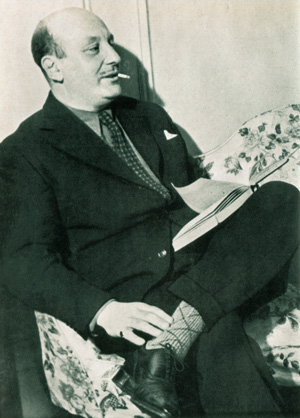Peter Cheyney (Reginald Evelyn Peter Southous Cheyney)

Peter Cheyney wrote his first novel, the Lemmy Caution thriller This Man Is Dangerous in 1936 and followed it with the first Slim Callaghan novel, The Urgent Hangman in 1938. The immediate success of these two novels assured a flourishing new career, and Cheyney abandoned his work as a freelance investigator. Sales were brisk; in 1946 alone, 1,524,785 copies of Cheyney books were sold worldwide. A meticulous researcher, Cheyney kept a massive set of files on criminal activity in London until they were destroyed during the Blitz in 1941; he soon began to replace his collection of clippings. Cheyney dictated his work. Typically Peter Cheyney would “act out” his stories for his secretary, Miss Sprauge, who would copy them down in shorthand and type them up later. The Caution books read very much like what they are: pulp stories written in ersatz American by a British writer. With private detective Slim Callaghan he invented a non-American who is based in Cheyney’s home territory of London. Callaghan starts out in Marlowe-mode in the first book in a shabby office (in Chancery Lane). Things are not going well for him and he has difficulty paying the bills. However, unlike Marlowe, Callaghan is upwardly mobile and after some detecting success helping a rich (female) client he is able to make the step up to having his own agency with a fancy office and pretty secretary in swanky Berkeley Square.
Subsequent novels in the series follow very much the tried and tested pattern. Callaghan’s services are sought by rich and attractive female client. Lady in question is naturally involved in upsetting business (often blackmail) that precludes going to police. Callaghan meets lady, likes what he sees (Cheyney appears to have studied women’s fashion for he never fails to describe in detail the every lady’s clothes and jewellery), is nonchalant and impudent, which simultaneously upsets and attracts lady. Lady of course is either afraid to tell all facts or is being deliberately misleading and Callaghan must work out truth for himself. Calaghan begins his investigating, in Marlowe-style, by putting himself about and stirring up trouble, which attracts attention of people (including at least one shady nightclubowner) involved in puzzle who supply him with enough pieces to get whole picture and to plan strategy. During case (usually a period of days) he will push himself to limit, getting no sleep, drinking continually (‘three fingers of straight whisky’) driving Jaguar down to Torquay or Weymouth to visit refined client and driving back to London same night if necessary to overall plan. A string of attractive women will throw themselves at him during narrative but he only has eyes for refined client. He will hand out and receive beatings, he will tamper with evidence and outsmart both criminals and police until case is solved and refined client extricated from trouble and danger. Only then (to chagrin of secretary who has long-standing crush) will he reap dual reward of favours of refined client accompanied by substantial check.
Peter Cheyney’s “Dark” series was widely praised during World War II for bringing more realism to espionage fiction. In their casual brutality and general “grubbiness,” the “Dark” novels seem to have foreshadowed much of the Cold War fiction of the mid to late 1960s. Anthony Boucher placed these later works in the context of Graham Greene and Joseph Conrad. The characterisation of Ernest Guelvada in the “Dark” series is one of the high points of Cheyney’s career. A cheerfully sadistic war operative whose objective is to deplete the ranks of opposing forces in a leisurely but thorough fashion, the loquacious Guelvada still finds the time to dress immaculately, drink immoderate amounts of alcohol and remain a counter agent. Cheyney published one volume of short stories, advice to critics and a few poems in No Ordinary Cheyney (London: Faber and Faber, 1948). Peter Cheyney died at age 55, after having fallen into a coma. He was buried at Putney Vale Cemetery in London.
Born
- February, 22, 1896
- United Kingdom
- London, England
Died
- June, 26, 1951
- United Kingdom
- London, England
Cemetery
- Putney Vale Cemetery and Crematorium
- Wimbledon, London, England
- United Kingdom



